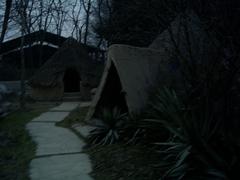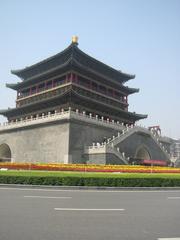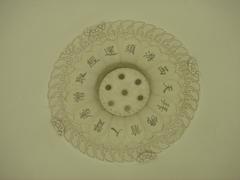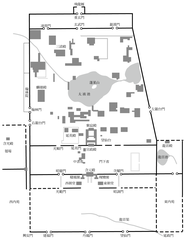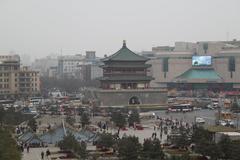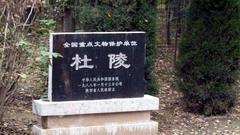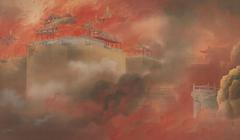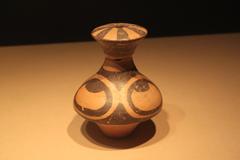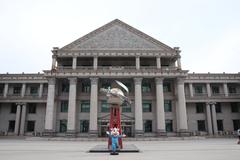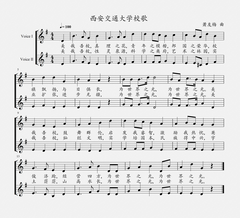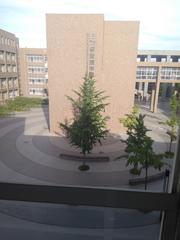Daxingshan Temple Visiting Hours, Tickets, and Xi’an Historical Sites Guide
Date: 14/06/2025
Introduction
Daxingshan Temple (大兴善寺), located in Xi’an’s historic Yanta District, is among China’s oldest Buddhist temples and a celebrated site of religious, architectural, and cultural heritage. Established in 266 CE during the Western Jin dynasty, the temple flourished in the Sui and Tang dynasties as a major center for Buddhist translation and the spread of Esoteric (Tantric) Buddhism, welcoming influential Indian monks such as Śubhakarasiṃha, Vajrabodhi, and Amoghavajra (China Highlights, Travel China Guide). Its legacy extends along the Silk Road, shaping Buddhist traditions in East Asia and even influencing Japanese Vajrayana schools (Buddhistdoor Global, UNESCO Silk Roads).
Today, Daxingshan Temple remains an active place of worship and a cultural landmark, renowned for its Ming and Qing dynasty architecture, spiritual artistry, and tranquil gardens. This guide provides detailed information on the temple’s history, visiting hours, ticketing, accessibility, nearby attractions, and practical tips to help you plan a rewarding visit to one of Xi’an’s most important historical sites (chinaexpeditiontours.com, trip.com, Xi’an Tourism Bureau, China Daily).
Table of Contents
- Introduction
- Historical Overview
- Spiritual and Cultural Significance
- Architectural Highlights
- Visiting Information
- Facilities and Accessibility
- Special Events and Festivals
- Visitor Tips
- Frequently Asked Questions (FAQ)
- Nearby Attractions
- Conclusion
- References
Historical Overview
Origins and Early Development
Daxingshan Temple was founded in 266 CE under Emperor Wu of the Western Jin dynasty. Originally known as Zunshan Temple, it gained imperial support and was renamed during the Sui dynasty, marking its ascent as a Buddhist center in Chang’an (modern Xi’an). The temple reached its zenith in the Sui and Tang dynasties, becoming one of the “Three Great Sutra Translation Sites” in the capital.
Role in the Sui and Tang Dynasties
During these periods, Daxingshan Temple was central to the translation of Buddhist scriptures and the spread of Vajrayana (Tantric) Buddhism. Eminent Indian monks taught here, and the temple’s influence extended to Japan, notably impacting the development of Shingon Buddhism (Buddhistdoor Global, Japan Times).
Decline, Restoration, and Modern Relevance
The temple suffered destruction during the Great Anti-Buddhist Persecution (mid-9th century) and again in later centuries, but was restored during the Ming and Qing dynasties. Recent renovations in the 20th century have preserved key structures and the temple now serves as both a heritage site and an active religious center (chinaexpeditiontours.com).
Spiritual and Cultural Significance
Center of Esoteric Buddhism
Daxingshan Temple is one of the “Three Great Buddhist Temples for Translation” in Chang’an, serving as a pivotal hub for the spread of Esoteric Buddhism in China. Its connection to the “Three Great Masters”—Śubhakarasiṃha, Vajrabodhi, and Amoghavajra—established the temple as a spiritual beacon for Vajrayana practitioners (Buddhistdoor Global).
Pilgrimage and Rituals
The temple continues to attract pilgrims for annual Dharma assemblies and Esoteric Buddhist rituals, hosting important ceremonies like Vesak and the Ullambana Festival (Shaanxi Tourism). Statues of Buddha and bodhisattvas, along with murals and inscriptions, reflect its rich spiritual tradition.
Cultural Exchange and Silk Road Legacy
Strategically located along the ancient Silk Road, Daxingshan Temple was a center for religious and cultural exchange. It welcomed foreign monks and scholars, contributing to the cosmopolitan spirit of Tang-era Chang’an (UNESCO Silk Roads).
Architectural Highlights
Layout and Main Structures
The temple complex follows a classic north-south axis, guiding visitors through a sequence of courtyards and halls that include:
- Mountain Gate (Shanmen): Qing dynasty style, marking the entrance to the sacred grounds.
- Bell and Drum Towers: Symmetrically positioned within the main gate.
- Devajara Hall (Hall of Heavenly Kings): Houses a rare Song dynasty wood-carved Maitreya Buddha and statues of the Four Heavenly Kings.
- Mahavira Hall (Daxiongbaodian): The spiritual heart, featuring statues of Sakyamuni Buddha and elaborate ornamentation.
- Guanyin Hall: Home to a thousand-hand Guanyin sandalwood statue.
- Sutra Library: Stores scriptures and historical artifacts.
Traditional architectural features include upturned eaves, intricate wooden brackets (dougong), and vibrant paintwork. The grounds are enriched by ancient cypress trees, stone steles, and peaceful gardens (chinaexpeditiontours.com, trip.com).
Artistic Heritage
Highlights include:
- Song dynasty wood-carved Maitreya and thousand-hand Guanyin statues.
- Murals depicting Buddhist scriptures and the lives of monks.
- Tang dynasty inscribed tablets and ancient stone steles.
Visiting Information
Hours and Admission
- Opening Hours: Daily, 8:00 AM – 5:30/6:00 PM (last admission typically 30 minutes before closing). Hours may vary during festivals—check official sources before visiting (China Highlights).
- Ticket Prices: Standard admission is 20–40 CNY for adults; discounts for students, seniors, and children. Practicing Buddhists and monks may enter free with proper ID (Travel China Guide).
- Ticket Purchase: Tickets are sold at the entrance and online via authorized tourism platforms.
Accessibility
- The complex is accessible via Metro Line 2 (Xiaozhai Station) plus a short walk or bus ride.
- Wheelchair access is available at main entrances and along primary pathways, but some halls have steps or uneven surfaces.
- Signage is bilingual; audio guides and printed brochures are available for a small fee (Xi’an Tourism Bureau).
Facilities and Amenities
- Restrooms: Clean facilities, including Western-style toilets.
- Drinking Water: Stations available.
- Vegetarian Restaurant: Serves traditional Buddhist cuisine (CNY 30–60 per meal), open for lunch and dinner (thesunrisedreamers.com).
- Gift Shop: Sells prayer beads, incense, Buddhist literature, and souvenirs.
- Wi-Fi: Free in main courtyards.
- Payment: Major credit cards, Alipay, and WeChat Pay accepted.
- Assistance: Helpful staff; first aid and lost-and-found services at the main gate.
Special Events and Festivals
Major events include:
- Vesak (Buddha’s Birthday): Lantern displays, chanting, and vegetarian feasts.
- Ullambana Festival: Honoring ancestors with ceremonies and offerings.
- New Year’s Blessings: Incense offerings and midnight prayers.
During festivals, special programs such as Dharma talks, meditation workshops, and calligraphy demonstrations are offered. Advance registration may be required (China Daily).
Visitor Tips
- Dress Code: Modest attire; cover shoulders and knees, remove hats in main halls.
- Etiquette: Maintain silence, especially during rituals; avoid touching sacred objects or stepping over offerings.
- Photography: Allowed outdoors; generally prohibited inside main halls.
- Best Visiting Times: Spring and autumn for mild weather and blooming gardens; early mornings and weekdays for fewer crowds.
- Traveling with Children: The temple and gardens are family-friendly, but supervision is recommended.
Frequently Asked Questions (FAQ)
Q: What are the opening hours?
A: Usually 8:00 AM – 5:30/6:00 PM, with variations during festivals.
Q: How much does admission cost?
A: Standard tickets are 20–40 CNY, with discounts available.
Q: Are guided tours available?
A: Audio guides and bilingual brochures are available; private tours can be booked via agencies.
Q: Is the temple accessible for wheelchairs?
A: Main pathways are accessible; some areas have steps.
Q: Are there vegetarian food options?
A: Yes, the onsite restaurant serves traditional Buddhist dishes.
Q: Can I take photos inside the temple?
A: Photography is allowed in outdoor areas; restricted in main halls.
Q: What other attractions are nearby?
A: The Giant Wild Goose Pagoda, Shaanxi History Museum, and Tang Paradise Park.
Nearby Attractions
- Giant Wild Goose Pagoda: UNESCO World Heritage Site and Tang dynasty landmark (UNESCO).
- Shaanxi History Museum: Showcasing regional artifacts and Silk Road history.
- Tang Paradise Park: A recreation of ancient imperial gardens.
Combining a visit to Daxingshan Temple with these nearby sites creates a well-rounded Xi’an itinerary.
Conclusion
Daxingshan Temple is a living testament to Xi’an’s Buddhist heritage, architectural beauty, and cultural vibrancy. Its accessible hours, affordable tickets, and welcoming facilities make it an ideal destination for history enthusiasts, pilgrims, and travelers seeking tranquility. By respecting temple etiquette and taking advantage of guided tours, visitors can deepen their understanding of this remarkable site.
For up-to-date information, download the Audiala app, explore related guides on our website, and follow us on social media for the latest updates and travel inspiration.
References
- Daxingshan Temple Visiting Hours, Tickets & Historical Guide to Xi’an’s Ancient Buddhist Site (China Highlights)
- Daxingshan Temple in Xi’an: History, Visitor Info, and Cultural Significance (Travel China Guide)
- Daxingshan Temple: The Cradle of Chinese Esoteric Buddhism (Buddhistdoor Global)
- Daxingshan Temple and the Silk Road (UNESCO Silk Roads)
- Daxingshan Temple Visiting Hours, Tickets, and Architectural Highlights in Xi’an (chinaexpeditiontours.com)
- Daxingshan Temple Gardens and Visitor Experience (trip.com)
- Xi’an Tourism Bureau: Daxingshan Temple (Xi’an Tourism Bureau)
- China Daily: Daxingshan Temple and Cultural Heritage (China Daily)
- China Daily: Special Events at Daxingshan Temple (China Daily)
- Daxingshan Temple Official WeChat (Daxingshan Temple WeChat)
